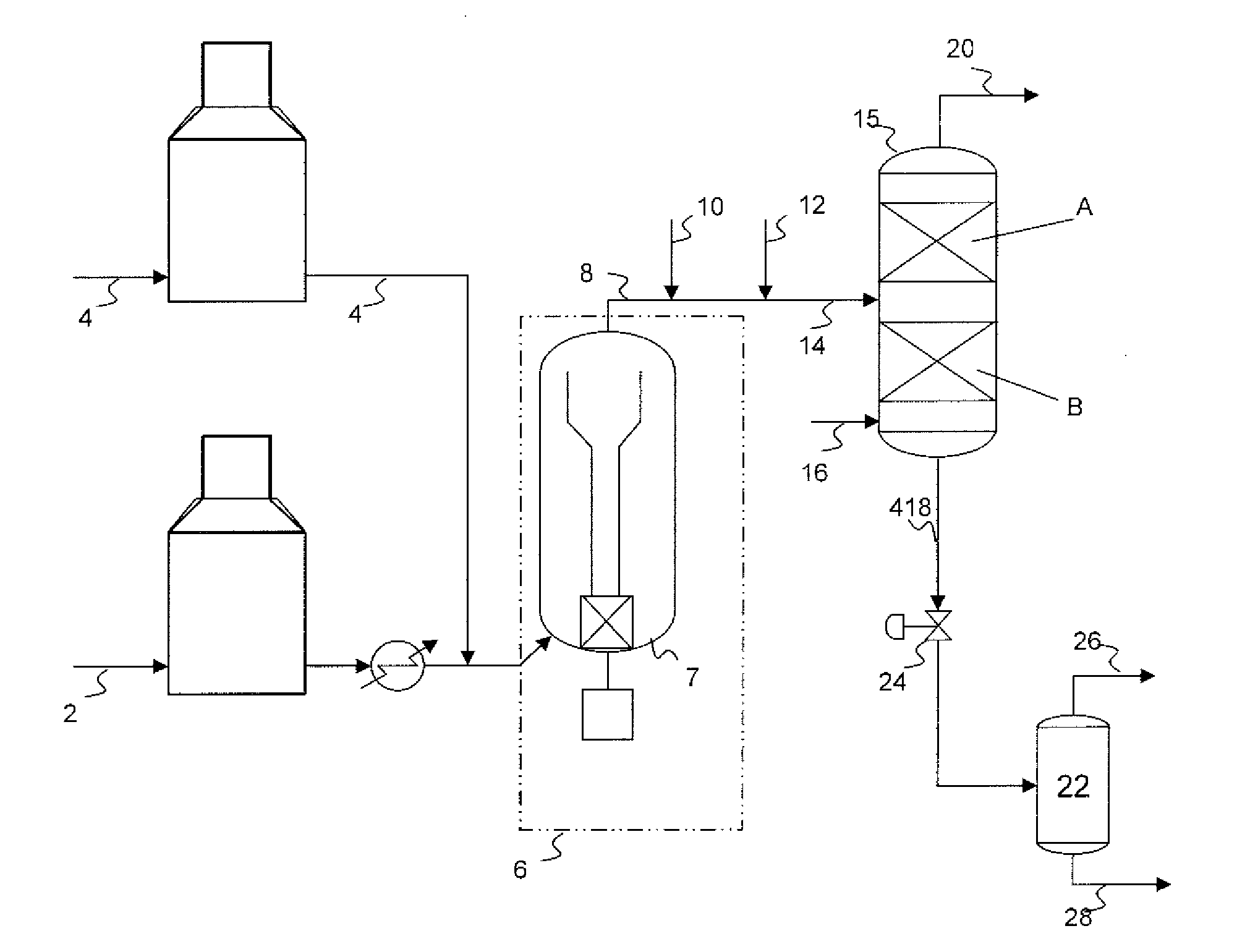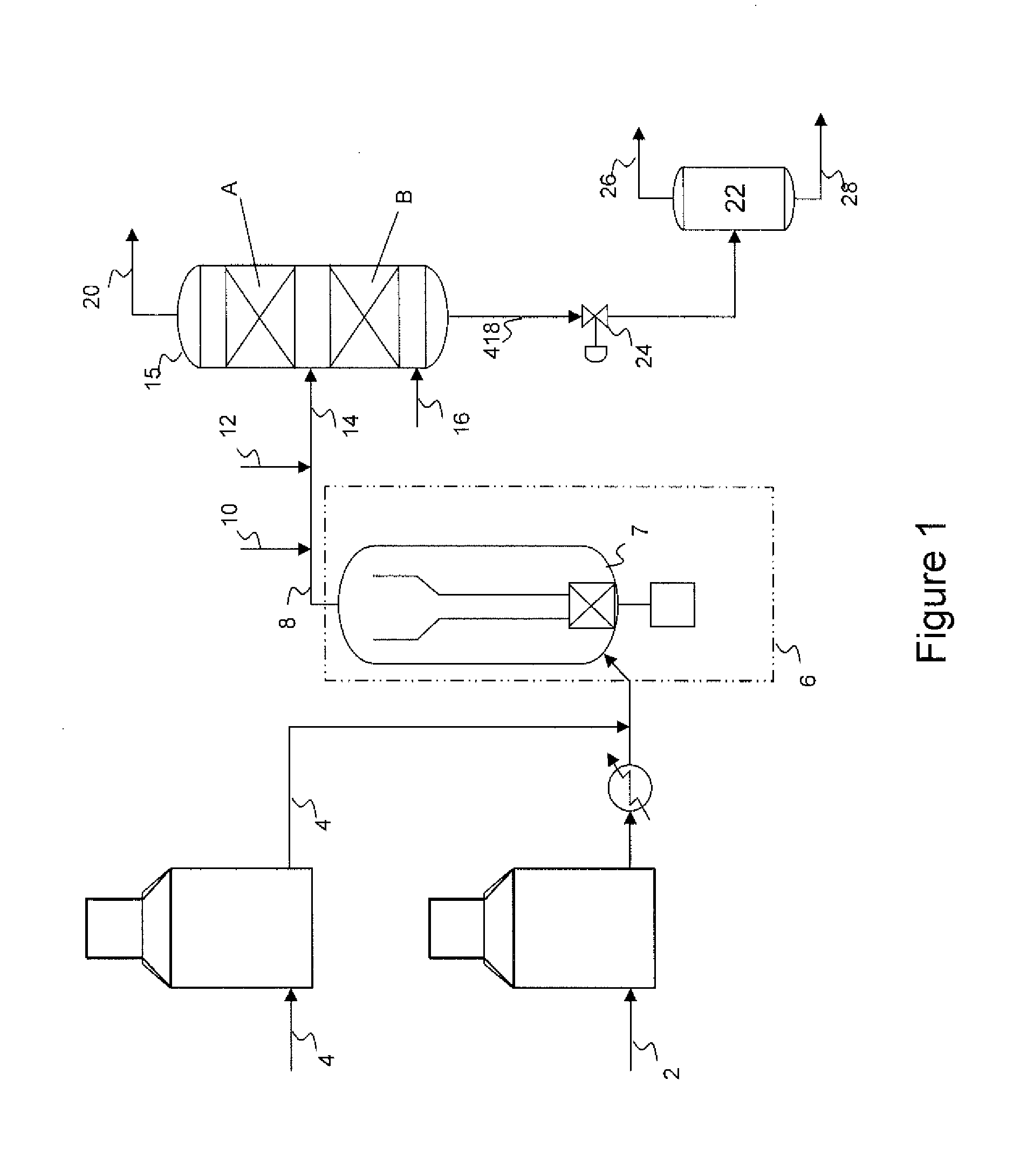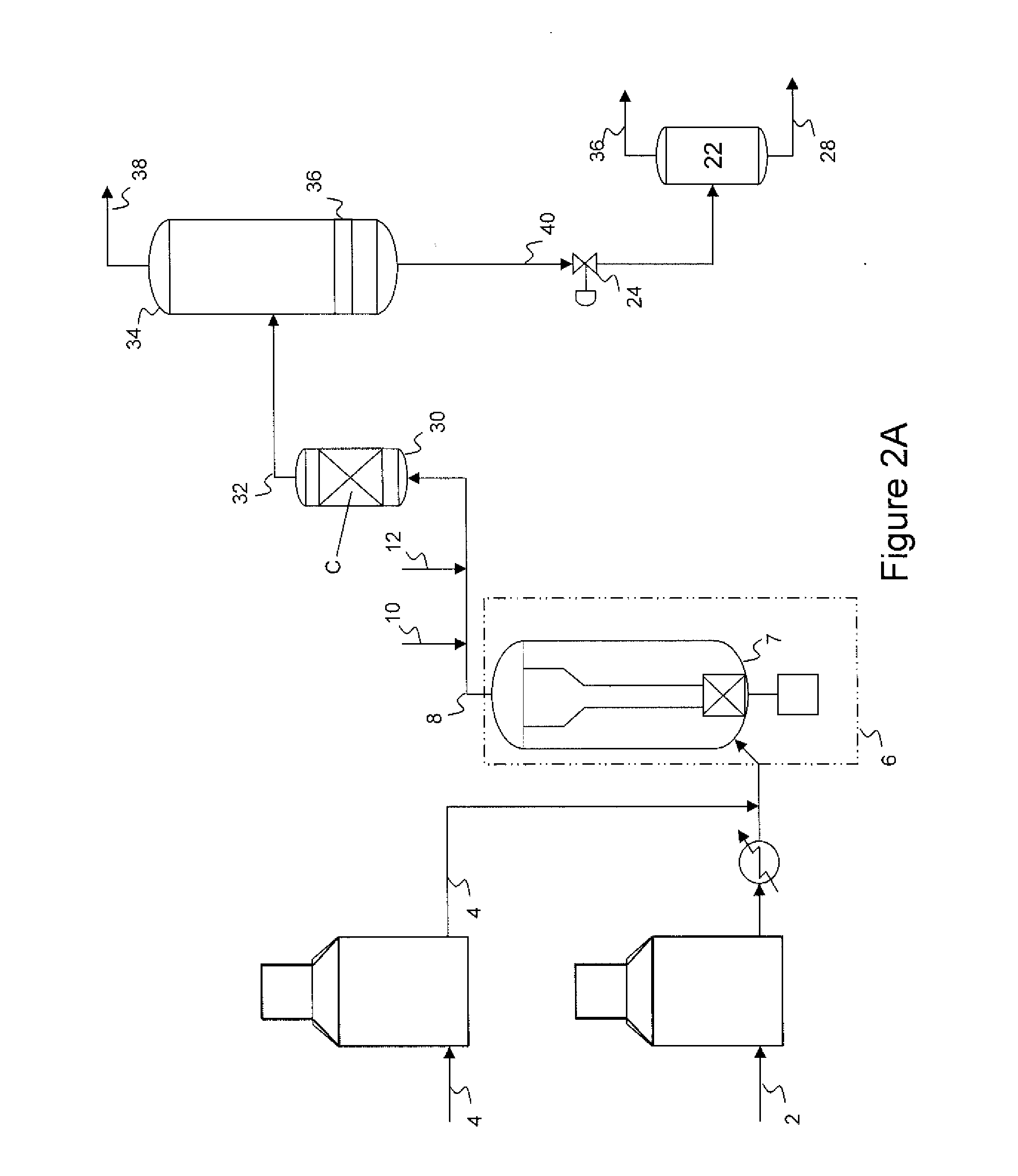Residue hydrocracking
- Summary
- Abstract
- Description
- Claims
- Application Information
AI Technical Summary
Benefits of technology
Problems solved by technology
Method used
Image
Examples
example 1
[0050]A first theoretical example is described with reference to FIG. 1 illustrating the effect the addition of a reactor / stripper has on the heavy unconverted oil and distillate product qualities. Specifically in this example the ebullated bed hydrocracking stage operates at a liquid hourly space velocity of 0.25 hr-1 and a temperature between 425° C. and 432° C., converting between 65 to 73% of the vacuum residue fraction in the feed. In addition approximately 75% of sulfur, 80% of the metals, 60% of the CCR and 65% of the asphaltenes in the residue feed is removed in this hydrocracking stage.
[0051]The resulting heavy unconverted oil product after quenching then flows downward through the residue hydrotreating catalyst bed where it contacts hydrogen flowing upward and countercurrent to the unconverted oil which undergoes further reaction. In this bed the unconverted residue fraction undergoes further desulfurization, demetallation and Conradson Carbon Reduction and asphaltene conv...
example 2
[0054]A second theoretical example is described with reference to FIG. 2B illustrating the combined effect the addition of an upflow or OCR reactor and subsequent reactor / stripper has on residue conversion, reaction yields and heavy unconverted oil and distillate product qualities. As in Example 1, it is envisaged that the ebullated bed hydrocracking stage operates at a LHSV of 0.25 hr-1 and a temperature of 425° C. to 432° C., converting between 65 and 73 of the vacuum residue fraction in the feed. In addition, as in Example 1 approximately 75% of the sulfur, 80% of the metals, 60% of the CCR and 65% of the asphaltenes in the residue feed is removed in the hydrocracking stage.
[0055]In Example 2, the liquid and vapor effluent from the hydrocracking reaction stage after being quenched is further processed in an upflow reactor, containing residue hydroprocessing catalyst, thereby providing for additional sulfur, metals, CCR and asphaltene removal. It is envisaged that the upflow react...
PUM
 Login to View More
Login to View More Abstract
Description
Claims
Application Information
 Login to View More
Login to View More - R&D
- Intellectual Property
- Life Sciences
- Materials
- Tech Scout
- Unparalleled Data Quality
- Higher Quality Content
- 60% Fewer Hallucinations
Browse by: Latest US Patents, China's latest patents, Technical Efficacy Thesaurus, Application Domain, Technology Topic, Popular Technical Reports.
© 2025 PatSnap. All rights reserved.Legal|Privacy policy|Modern Slavery Act Transparency Statement|Sitemap|About US| Contact US: help@patsnap.com



